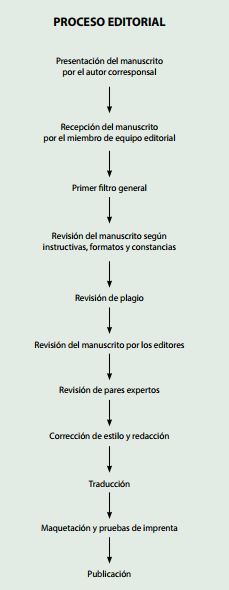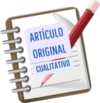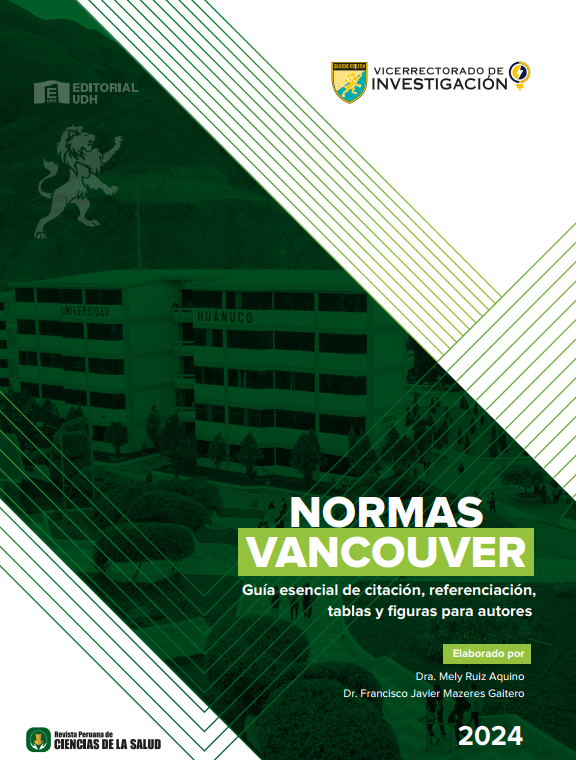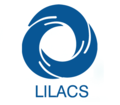![]()
Editorial policy
1. AIMS AND SCOPE
The Revista Peruana de Ciencias de la Salud (Peruvian Journal of Health Sciences) is the official publication of the Vice-Rector's Office for Research of the Universidad de Huánuco (University of Huanuco), aimed to diffuse knowledge related to public and collective health, health education, health research and health sciences. It is edited in one volume per year made up of four issues with a quarterly periodicity and is arbitrated by external blind peers. It is distributed in electronic format, with free full text access, through its website: http://revistas.udh.edu.pe/index.php/RPCS
The journal applies since 2020 in a continuous publication format, publishing the article in the OJS after its acceptance without waiting for all the articles in the issue to be complete.
The instructions for submitting articles to the Journal follow the recommendations of the Uniform requirements for manuscripts submitted to biomedical journals published by the International Committee of Medical Journal Editors (ICMJE). (http://www.icmje.org/).
The Journal is currently included in the Latindex 2.0 Catalog (Regional Online Information System for Scientific Journals in Latin America, the Caribbean, Spain and Portugal), Latindex Directory, REDIB (Iberoamerican Network of Innovation and Scientific Knowledge) and in the National Digital Repository of Science, Technology and Innovation, called Alicia, of CONCYTEC.
1.1 Objetive
Disseminate research related to public and collective health, health education, health research and health sciences to the academic community.
2. GENERAL RULES
2.1 Open access policy
This Journal provides immediate open access to its content, based on the principle that offer public free access to research support to a greater global exchange of knowledge. The Journal is open access, which means that all content is available free of charge to the user or their institution.
Users may read, download, copy, distribute, print, search, or link the full texts of articles, or use them for any other academic research work, without requesting prior permission from the publisher or the author, all under the Creattive Commons license, CC-BY 4.0. The Journal supports and adheres to the Declaration on Research Assessment (DORA) https://sfdora.org/signers/ to emphasize published research.
2.2 Copyright
Authors who submit articles to the Journal, at the time of sending the affidavit of authorship and authorization for publication of the article. In case of publication, they keep their intellectual authorship rights, ceding the rights of first publication in any printed or electronic format of the Revista Peruana de Ciencias de la Salud.
This publication will be subject to the Creative Commons Acknowledgment License that allows third parties to share the work as long as its author and first publication in this journal are indicated.
2.3. Self-archiving policy
The Journal allows authors to share, disseminate and publicize their research published by the Journal (post-print version by the editor) in different media (academic social networks, repositories and portals) available on the web.
2.4. Evaluation
Manuscripts are received by e-mail and through the OJS (Open Journal System) and are initially evaluated by the Scientific Committee as a first filter within the formal processes. If the proposals do not meet the criteria required by the Journal (editorial and instructive policy), they will not be able to continue with the editorial process and will be returned to the corresponding author. If they meet the requirements, authors will be informed that the manuscript will continue with the blind peer review process.
A first editorial response on the status of the manuscript applying for publication will be sent within a period of no less than 15 calendar days. Once the first observations have been verified, the manuscript will enter the peer review process. The average number of weeks between the submission of the article and publication is 8 weeks, being disseminated in PDF and HTML format on the web page as continuous publication.
2.4.1. External peer review
Together with the submitted manuscript, the authors must sign and submit the declaration of copyright exclusivity, the originality and authorship format and the affidavit, to start the evaluation process. Manuscripts sent must be submitted exclusively to the Journal, not being allowed its simultaneous submission to another journals, since publications must be unpublished and original.
The presentation of a manuscript implies that the described work has not been previously published, except for studies presented in congresses (proceedings) and studies based on thesis (presenting information, tables and graphs different than the thesis), indicating it in the OJS of the Journal.
2.4.2. Initial evaluation
Once the manuscript has been submitted, the editorial team verifies if all the established instructions were carried out; if not, they will be returned to the author without starting the evaluation process. If it complies with all the requested instructions, the manuscript is sent for review by the associate editors.
a. Peer review
The Journal is managed under the double-blind peer review system, where neither the authors nor the reviewers know the identity of the other group. There is, therefore, no direct communication between the authors and the reviewers.
Each manuscript is evaluated by external reviewers, selected by the editors. Manuscripts submitted for review are privileged communications and are the private property of the authors. Therefore, reviewers (such as members of the editorial team) should not publicly discuss the authors' work or appropriate their ideas before publishing the manuscript. Reviewers should not keep copies of reviewed manuscripts in their personal files and are prohibited from sharing copies of the manuscript with others. Reviewers must destroy copies of manuscripts after submitting revisions.
All reviewers must follow the guidelines of the Committee on Publication Ethics (COPE).
b. Final decision
Once the reviewers' report is received, the general editor together with members of the editorial team meet and, based on the reviewers' reports, make the decision to: accept the manuscript in its entirety, accept it after minor changes, make its acceptance conditional to major changes, or reject the contribution.
If there is a dispute about the decision, the general editor or the scientific editor will make the final decision to accept or reject the manuscript, which will be endorsed by the Editorial Committee. Any decision made by the Editorial Committee will be informed to the author by email and the OJS.
c. Appeal
Authors who think that their manuscripts were wrongly rejected can send an appeal letter to the general editor who handled the manuscript by e-mail.
The letter should detail the author's concern and state how the manuscript can be reviewed or clarified to address the key issues mentioned by the editors and reviewers. The editors follow the COPE guidelines and rarely reverse their original decisions. Many rejections involve priority judgments by the editors that authors generally cannot address through an appeal. Once an appeal is received, the editors can confirm their decision to: reject the manuscript, invite a revised manuscript, or seek additional peer review or statistical review of the original manuscript.
2.5. Withdrawal of articles
To withdraw the manuscript from the editorial process, the author must inform by the email of the Journal the reason for the withdrawal of the manuscript and wait for the editor's response to continue sending the proposal to another journal.
2.6. Required Documentation
Authors must attach the complete manuscript, including tables or figures in a single submission and within the same file in the OJS. In addition, they should send the affidavit format, originality format, and ethics format, to start the evaluation process.
2.7. Digital preservation
This Journal uses the Lots of Copies Keep Stuff Safe (LOCKSS) system to preserve the metadata of the Journal articles in a permanent and secure archive (disclaimer). LOCKSS is an open-source program developed by the Stanford University Library that allows publishers to preserve article metadata.
2.8. Frequency of publication
The Journal publishes four quarterly issues a year: January-March, April-June, July-September and October-December.
2.9. Payment for publication of articles
The Journal does not apply an article processing charge (APC) on any of the manuscripts accepted for authors. This includes reception, initial review, peer review, style correction, layout, publication, DOI assignment and others.
2.10. Disclaimer
The Journal does not support the opinions expressed by the authors. The opinions expressed by the authors are their sole responsibility and do not necessarily reflect the opinion of the Editorial Committee of the Journal. The mention of the commercial name of certain products does not imply that the Journal approves, recommends, or prefers them to similar products that are not mentioned.
2.11. Privacy statement
The Journal will preserve the names and data inclu- ded in the OJS registry. They will be used exclusively for the purposes indicated by the Journal and will not be available to any media or people outside the Journal.
2.12. Guidelines for the development and presen- tation of research
For the presentation of articles, authors are recommended to follow internationally established guidelines for the design, conduct and presentation of different types of studies:
- Randomized controlled trials: CONSORT (http://www.consort-statement.org/).
- Systematic reviews and meta-analysis: PRISMA (http://www.prismastatement.org/).
- Systematic reviews and meta-analysis of observational studies: MOOSE (http://www.consort-statement.org/resources/downloads/other-instruments).
- Diagnostic tests: STARD (http://stard-statement.org).
- Observational studies: STROBE (strobe-statement.org).
- Qualitative studies: SRQR (http://www.equator-network.org/reporting-guidelines/srqr/).
- Economic evaluations: CHEERS https://www.ispor.org/TaskForces/documents/Cheers-paperSpanish.pdf
3. ETHICAL RESPONSIBILITY
The Journal follows the procedures recommended by:
- Guidelines on Good Publication Practice
- International Committee of Medical Journal Editors (ICMJE)
- Ethical Principies of Psychologists and code of conduct
- British Psychology Society Code of Ethics
3.1 Plagiarism detection policy
The Editorial Committee established as editorial policy that the articles submitted to the Journal for evaluation of publication will be submitted to a similarity detection software for plagiarism identification (Turnitin). Only articles with a maximum of 20% coincidence with other publications will be accepted, provided that such coincidence is not composed entirely of several consecutive paragraphs. Articles that exceed this percentage will be returned to the author with the corresponding report so that the author can make the respective corrections and, if the author considers it convenient, may be sent again to the Journal to evaluate its publication.
3.2 Policies for sanctioning inappropriate behavior
The set of misconducts includes: falsification of data, manipulation of data in favor of results, indiscriminate use of selfcitations, and unjustified authorship. If any of these malpractices is found in any article, the Editorial Committee will evaluate the case and submit it for sanction according to the type of fault.
3.2.1 Minor infractions
Minor infractions are misconducts that do not warrant a full investigation, where all parties involved have the right of reply; for example, unjustified inclusion of perpetrators, abuse of self-citation, among others considered by the Committee.
3.2.2 Major infractions
This type of misconduct requires a full investigation involving the superiors and employers of the person objectively accused for notifcation. If there is evidence of guilt, the Journal may involve external experts (limited number of people to be considered by the Editorial Committee) for fnal opinion and sanction (alteration of results, plagiarism, self-plagiarism, double submission of articles, among others considered by the Committee). The author has the right to appeal this opinion.
3.2.3 Consequences
The Journal makes the decision on the type of sanction according to the seriousness of the infraction:
a) in the case of minor offenses, the Journal will send a notifcation to those involved, about the mis conduct, so that they can avoid this type of behavior in the future.
b) In case of serious misconduct, the Journal may send a formal letter to the employer, fnancial body or superior of the persons involved, stating the case in question. According to the seriousness of this fault, the Journal may publish an editorial on unethical conduct, attaching the name of the persons involved (the specific case), remove or withdraw the publications of the persons involved indefinitely.
3.3 Conflicts of interest
Authors should indicate in the article, in detail, if there are any conflicts of interest to be submitted for evaluation (conflicts of interest can be moral, economic, labor, or research).
3.4 Ethical responsibility
Instructions for submitting articles to the Journal are based on the Uniform Requirements for the Preparation of Articles Submitted to Biomedical Journals of the International Committee of Medical Journal Editors (ICMJE) (http://www.icmje.org/).
The Journal is in compliance with the ethical standards set by the International Committee
Committee on Ethics in Scientific Publications (COPE), whose recommendations can be found in the Code of Conduct and Best Practice Guidelines for Journal Editors. This information is available at: http://publicationethics.org
The Journal applies the COPE recommendations on the policy of detecting ethical errors in publication, such as: plagiarism, fictitious authorship, changes in authorship, redundant publication, data manipulaction, and undisclosed conflicts of interest (Guidelines on Good Publication Practice, Ethical Principies of Psychologists and code of conduct y British Psychology Society Code of Ethics).
Articles involving the results of research involving human subjects must follow the ethical principles contained in the World Medical Association's Declaration of Helsinki and comply with the specific legislation (if any) of the country in which the research was conducted. They must also contain a clear statement of this compliance in the body of the article and must be approved by a research ethics committee established for this purpose. The editors of the Journal reserve the right to request additional information on the ethical procedures performed in the research.
3.5 Authorship contribution
All authors must have made substantial contributions in each of the following areas:
- The conception and design of the study, the acquisition of data, or the analysis and interpretation of data.
- The initial proposal of the paper or critical review of the intellectual content.
- The fnal approval of the submitted version. Authors are encouraged to carefully review the listing and order of authors before submitting their paper for the first time. Any addition, deletion, or rearrangement of author names after entry into the review is not permitted in any way.
3.6 Monitoring
Only those papers that include a sworn statement of originality and ethics will be considered to begin the review process; and this must be expressly stated in the paper (section on ethical responsibility).
4. JOURNAL SPONSORS
This Journal is sponsored by the Universidad de Huánuco.
5. OAI-PMH
The OAI-PMH protocol (Open Archives Initiative-Protocol for Metadata Harvesting) for the retrieval of metadata from the articles of the Journal: http://revistas.udh.edu.pe/index.php/RPCS/oai
6. REJECTION RATE
The rejection rate for Revista Peruana Ciencias de Salud is greater than 25% of articles per issue.
Vol. 2 no. 1, 2, 3 and 4 of 2020 =40%.
Vol. 1 no. 1, 2, 3 and 4 of 2019 = 25%
7. FLUJO EDITORIAL

























